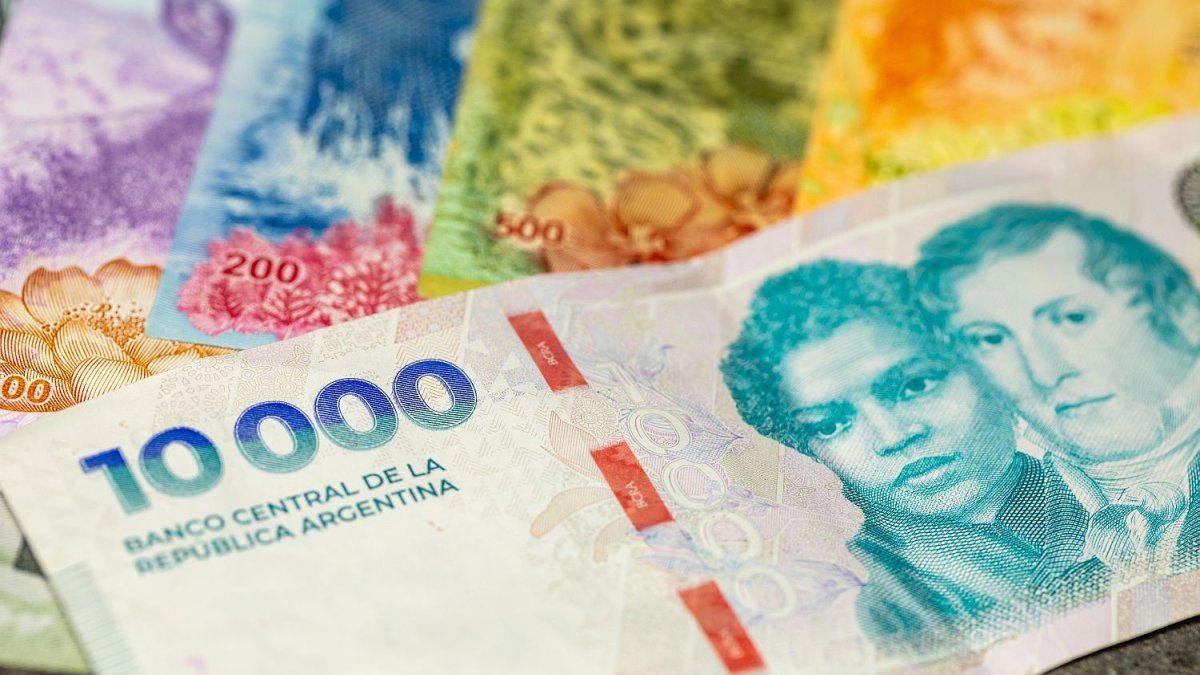The market responded quickly to the signal sent on Friday by Luis Caputo, after the close of operations. In the call for bids for this Tuesday, Economy did not include fixed rate securities (inflation-tied bonds only). The impact was immediate: since the opening this Monday, the Lecap and the Boncap soared and the compression of the yield curve continues.
In this week’s tender, the Treasury faces an amount of expirations considerably lower than in previous placements: $1.6 billion. The Secretary of Finance took advantage of that circumstance to make a change of strategy. He left both Lecap and Boncap off the auction menu, which had been the protagonists in recent weeks due to the fall in the implicit inflation expectation in financial assets.
The increases in fixed-rate capitalizable bills and bonds caused their yields to compress significantly with respect to the levels validated by the Government in the last tender. Furthermore, as the rally was more concentrated in long Lecaps and Boncaps, the curve inverted. This means that short letters began to perform better than longer titles, reflecting that The market expects that the CPI will continue to decline and that, therefore, rates in pesos will be lower in the future.
In the city, the decision not to include these instruments in this Tuesday’s auction was interpreted as a message that the Government would not validate the rates that were in the secondary market at the end of last week, even though they had already compressed enough. Because? “Because they want to give the signal that inflation will continue to decelerate and that, then, they will return to a fixed rate when yields cut even further,” an operator told Scope.
Debt and “carry trade”: why are Lecap and Boncap flying?
As a result, This Monday the price of Lecap and Boncap shot up to 3.1% after half a round. Again, The increases were widespread throughout the curve, although the most important were concentrated in the long section: Boncap as of December 2025 advanced 3.1%; the Boncap as of October and the Lecap as of September 30, 2.7%; the Lecap as of September 12, 2.6%. On the other hand, the shortest tranche, maturing in the remainder of 2024, operated with increases of between 0.1% and 0.3%.
This way, the yield curve continues its trend of compression and inversion. The long section was already beginning to be quoted with monthly effective rates close to 3%.
“Following the idea that the market was seeing that inflation would give way to 2/2.5% monthly in the short term and that then it was going to fight for long rates of 3.5% (which were going to appear as a very good business), it seems to me that The Treasury is trying to give the impression of scarcity of fixed rates. “That the market begins to flatten, to demand more strongly the entire curve, and that this continues to support the ‘carry trade'”, had told Scope Javier Casabal, fixed income strategist at Adcap after the call for bids made by the Treasury.
In fact, The economic team itself promotes market bets on the “carry trade” as part of its macro scheme since it stimulates the settlement of foreign currencies from exporters and credits in dollars. Those who turned to carrying at the beginning of the year had obtained an accumulated profit in dollars of 31.8% until the first half of October. The exchange rate table and the compression of the gap (intervention through) are the key that generates juicy benefits.
Tender: the Treasury menu
For this Tuesday’s placement, Finance included four titles tied to inflation (Boncer). Three new bonds will be launched: one in May 2025, another in October of next year and another in October 2026. In addition, the Boncer will be reopened in March 2026. All are auctioned by price (which will be defined in the placement) and They pay 0% coupon.
In this regard, the SBS Group stated: “We are waiting for the cut-off rates, mainly to see if the Treasury seeks on this occasion to give some type of signal in relation to the real rate.”
Source: Ambito
I am Pierce Boyd, a driven and ambitious professional working in the news industry. I have been writing for 24 Hours Worlds for over five years, specializing in sports section coverage. During my tenure at the publication, I have built an impressive portfolio of articles that has earned me a reputation as an experienced journalist and content creator.




